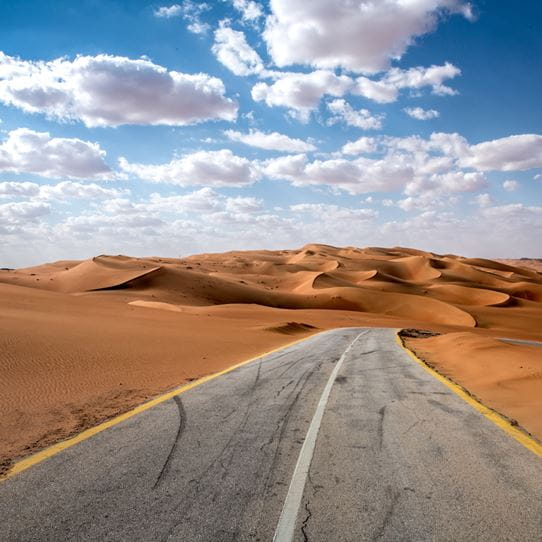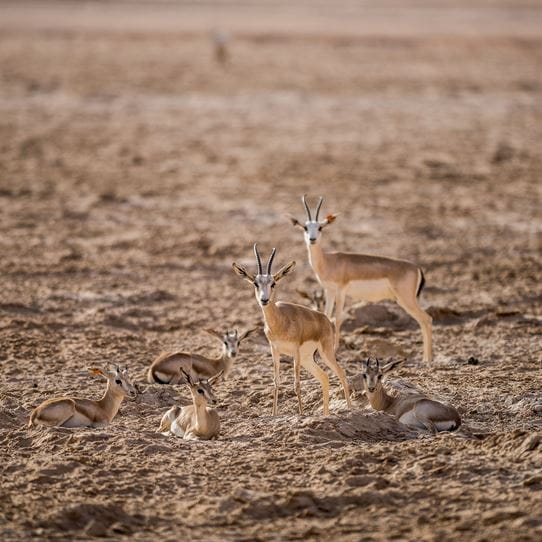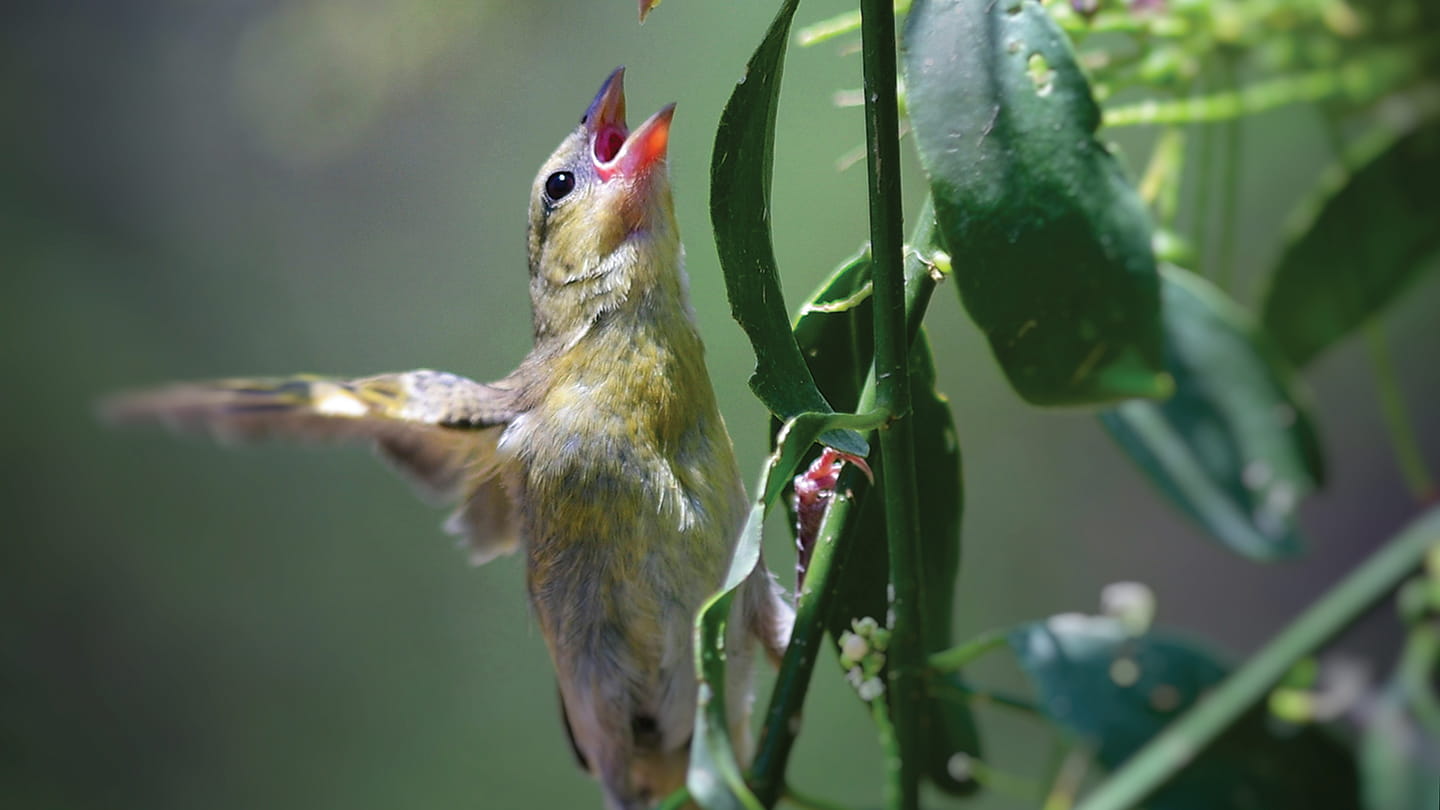
Shaybah Wildlife Sanctuary
In the Rub’ al-Khali, three Arabian species which were on the brink of extinction again roam free thanks to Aramco investment in the region.
Once a common sight, the Arabian oryx, sand gazelle, and ostrich were historically integral to this challenging but beautiful landscape — but were nearly lost due to overhunting. By 1972, only 11 Arabian oryx remained alive in the wild. The ostrich suffered its fate even earlier than the Arabian oryx. Excessive hunting caused it to disappear from the Rub’ al-Khali around 120 years ago, with the last recorded sighting in the Arabian Peninsula in 1939. Sand gazelles, too, saw their numbers dwindle to alarmingly low levels across Arabia due to the impacts of both hunting and habitat loss.
It was against this backdrop that Aramco decided to intervene. We are restoring 1,386 km2 of the Rub’ al-Khali to its natural state by preventing key threatening processes, such as off-road driving, hunting, grazing by camels, and firewood collection, while reintroducing these three locally-extinct species within a natural, functioning ecosystem maintained at equilibrium, and free of non-native species.
The Shaybah team agreed to meet four primary goals
Restore
Restore key native species to the Rub’ al-Khali.
Protect
Set aside and protect a significant portion of pristine wilderness to meet our environmental stewardship goals.
Research
Support academic research in the field of ecology and the environment, particularly to benefit desert conservation projects worldwide.
Educate
To provide a high-quality environmental education and visitor experience.
The Shaybah Wildlife Sanctuary is one of our voluntary sustainability community initiatives created to contribute to biodiversity restoration in the areas in which we operate. Located adjacent to our mega-facilities in the area, the fenced sanctuary now protects dozens of native plant and animal species.
The results have been remarkable. As of 2025, there are now 351 Arabian Oryx, 250 sand gazelle, and 62 Red-necked ostriches in the region. Phase 2 of the project, to be completed over the next couple of years, will involve the continued introduction of animals until optimal population levels are reached within the sanctuary. Additionally, a research station and operations building are under construction, which will strengthen academic partnerships between Aramco and research institutions, supporting long-term environmental research and conservation efforts in the area.

“Before we installed the roads, it took half a day just to travel the 12 kilometers to the sanctuary entrance. Now, with the roads in place, we can patrol the whole 106-kilometer perimeter in three hours. Only Aramco, with its deep desert construction expertise, could have pulled this off.”
Wayne Sweeting, wildlife scientist at Aramco

“Reintroducing threatened species like the Sand Gazelle plays a vital role in restoring ecological balance, preserving genetic diversity, and strengthening the resilience of natural ecosystems.”
Dr. Mohammad Zafarul Islam, Head of the Terrestrial Biodiversity Group at Aramco

Biodiversity initiatives
We strive to create a culture that prioritizes understanding of ecological habitats, and promotes their protection.